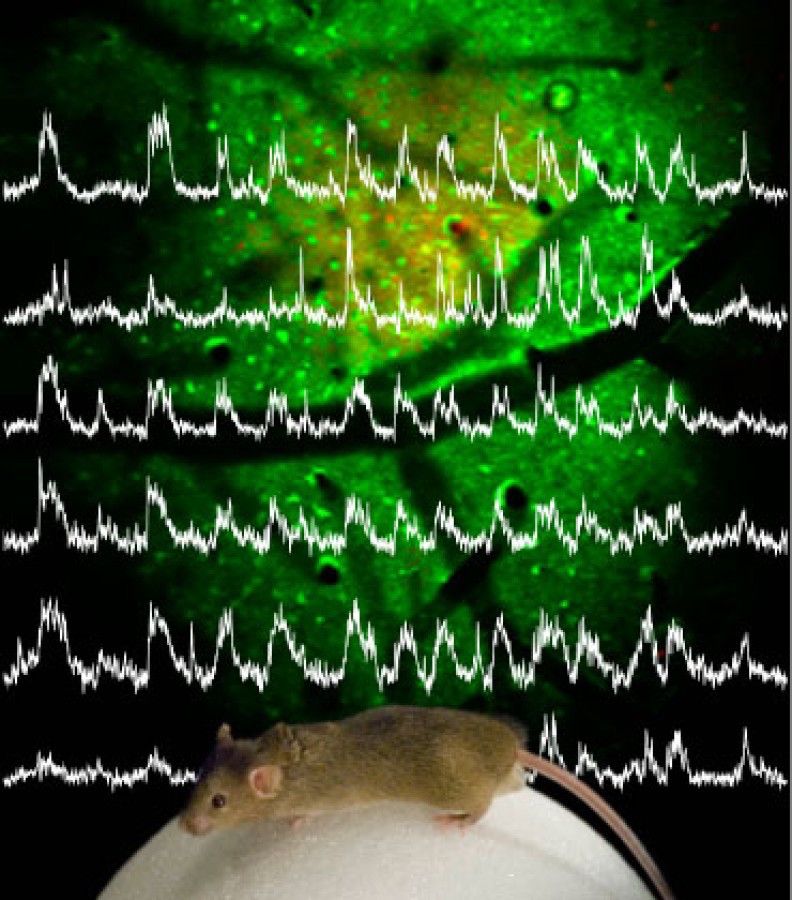$1.1 Million Brain Prize Awarded for Technique to Visualize Live Brain Cells

The world's most valuable prize for neuroscience research was awarded today (March 9) to four German and American scientists who invented a microscopy technique that reveals the finest structures of the brain, in both health and disease.
American scientists Karel Svoboda and David Tank and German scientists Winfried Denk and Arthur Konnerth shared the $1.08-million (1 million euro) Brain Prize for the invention and development of two-photon microscopy, a technique to create detailed images of brain cells and the connections, or synapses, between them, in action.
This new technique gives scientists the ability to study the function of individual brain cells, and how these cells communicate with each other as part of brain networks. [Beauty and Brains: Award-Winning Medical Images]
"Thanks to these four scientists, we're now able to study the normal brain's development and attempt to understand what goes wrong when we're affected by destructive diseases such as Alzheimer's and other types of dementia," Povl Krogsgaard-Larsen, chairman of the Grete Lundbeck European Brain Research Foundation, which awards The Brain Prize, said in a statement.
Denk was the "driving force" behind the invention of two-photon microscopy in 1990, prize representatives said. Along with Tank and Svoboda, Denk used the technique to image the activity of dendritic spines, the fundamental signaling units of neurons. Konnerth took the technique further by using it to measure the activity of thousands of synapses in living animals, and Svoboda used the method to study how brain networks change when animals learn new skills.
Light travels in tiny packets called photons. Two-photon microscopy is an advanced form of fluorescence microscopy, a technique that involves labeling parts of cells with molecules that glow, or fluoresce, when light of a certain wavelength shines on them (typically ultraviolet light). Normally, high-energy (short-wavelength) UV light spreads throughout the tissue and makes some areas glow more than others, making it hard to see specific parts of cells. In addition, the UV light can't penetrate very far into the tissue because it exhausts the fluorescent molecules.
In contrast, two-photon microscopy uses infrared (longer-wavelength) lasers, pulsed over a specific area so only that area emits light. "It's like the difference between looking at a movie in daylight, and looking at a movie in a dark hall: If you take away the unwanted light you can see what you want to see much better," Dr. Maiken Nedergaard, a professor of neurosurgery and neurobiology at the University of Rochester Medical School, in New York, said in the statement.
Sign up for the Live Science daily newsletter now
Get the world’s most fascinating discoveries delivered straight to your inbox.
Normally, a single photon of infrared light doesn't have enough energy to make a molecule fluoresce. But in a two-photon microscope, the pulsed laser shines enough light on a sample that, occasionally, two photons will hit at the same time, causing the molecule to give off light.
Unlike conventional fluorescence microscopy, two-photon microscopy doesn't exhaust the fluorescent molecules. The infrared can penetrate much deeper into the tissue, enabling researchers to peer hundreds of micrometers (several times the width of a human hair) beneath the surface of a living, active brain.
Crown Prince Frederik of Denmark will present the prize to the four researchers on May 7 in Copenhagen.
Follow Tanya Lewis on Twitter. Follow us @livescience, Facebook & Google+. Original article on Live Science.












